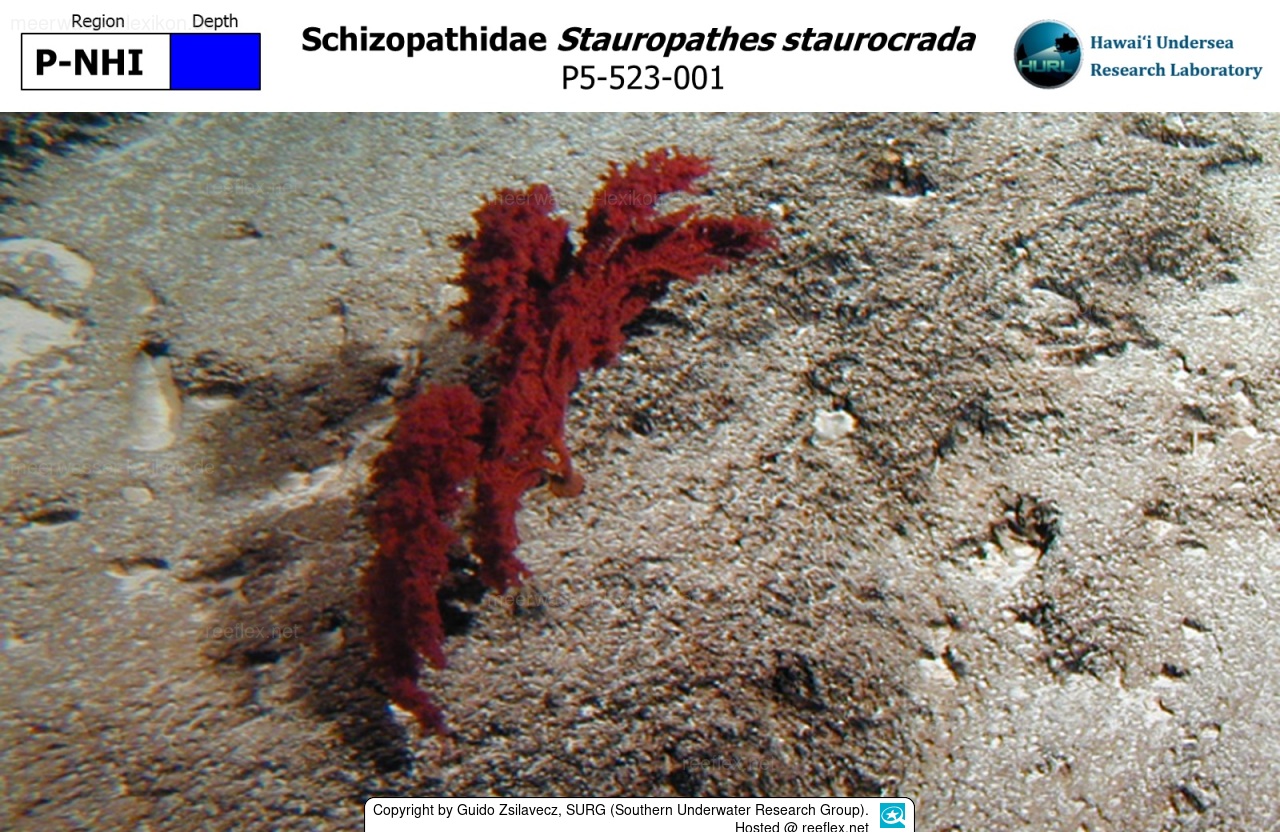Info
The holotype examined (only the upper part of the colony discovered) was just 13 cm high and 15 cm wide, was recovered from 441 meters depth around the waters of Penguin Bank, Moloka'i, Hawaiii.
Another specimen of this species was 38 cm high, about 40 cm wide, and has a basal stem diameter of 4 mm.
The stem begins about 5 cm above the basal plate, and the coral has an overall monopodial appearance.
The polyps of Stauropathes staurocrada tend to face each other.
This black coral is known from only two discovery reports (Hawaiii & Johnston Atoll), in 2019 Dennis M. Opresko described several new black corals, mainly from the Tonga-Kermadec Ridge, an oceanic ridge in the southwestern Pacific Ocean underlying the Tonga-Kermadec Island Arc.
Herein, Stauropathes staurocrada was included only on the basis of the original 2002 description to complete the genus Stauropathes.
Unfortunately, the original description does not contain any information about the color of the coral. If the imaging of HURL is correct, the reddish deep-water coral without zooxanthellae is in no way inferior to its tropical relatives, which get their coloration from those without zooxanthellae.
Similar species: Stauropathes arctica (Lütken, 1888).
Etymology:
The specific name is derived from the Greek words "stauros" (cross) and "crada" (branch), in reference to the cross-like appearance of the leaflets.
Another specimen of this species was 38 cm high, about 40 cm wide, and has a basal stem diameter of 4 mm.
The stem begins about 5 cm above the basal plate, and the coral has an overall monopodial appearance.
The polyps of Stauropathes staurocrada tend to face each other.
This black coral is known from only two discovery reports (Hawaiii & Johnston Atoll), in 2019 Dennis M. Opresko described several new black corals, mainly from the Tonga-Kermadec Ridge, an oceanic ridge in the southwestern Pacific Ocean underlying the Tonga-Kermadec Island Arc.
Herein, Stauropathes staurocrada was included only on the basis of the original 2002 description to complete the genus Stauropathes.
Unfortunately, the original description does not contain any information about the color of the coral. If the imaging of HURL is correct, the reddish deep-water coral without zooxanthellae is in no way inferior to its tropical relatives, which get their coloration from those without zooxanthellae.
Similar species: Stauropathes arctica (Lütken, 1888).
Etymology:
The specific name is derived from the Greek words "stauros" (cross) and "crada" (branch), in reference to the cross-like appearance of the leaflets.







 Guido Zsilavecz, SURG (Southern Underwater Research Group), Süd-Afrika
Guido Zsilavecz, SURG (Southern Underwater Research Group), Süd-Afrika




